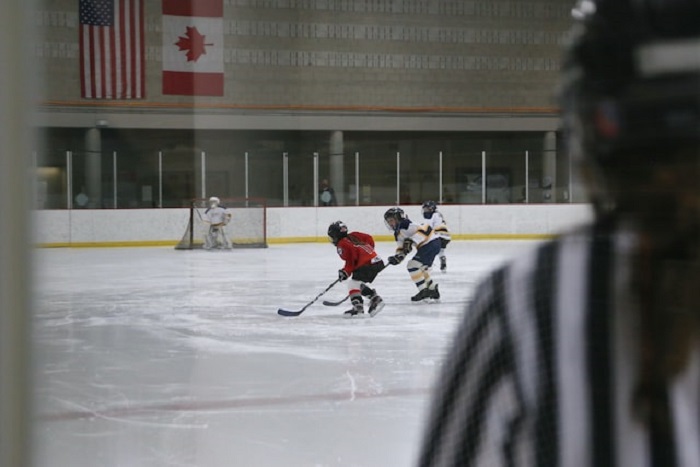
As witnessed with the recent scandal, the toxic masculine culture of hockey is at the heart of these concerns. A culture where secrecy and silence are expected. And Hockey Canada has used its own resources to support and cover up this toxic culture.
It took an outcry from the Canadian public, the federal government and corporate sponsors pulling their support for the leadership to finally step away. But what is being missed in this conversation is that Hockey Canada is not just about men’s hockey — it’s about women’s and para ice hockey programs as well.
So, what happens to these groups when the sponsors step away, government support is pulled, provinces decline to pay their membership dues and the general public has lost faith in the sport?
Persistent inequities in Hockey
Let’s be honest, Hockey Canada has been focused on the men’s game – full stop. For its meager efforts to supposedly raise the profile of the women’s team, women’s hockey remains underfunded, poorly supported, and built on toxic masculine ideals – despite the fact the women’s team breaks viewership records and ranks in the top on the world stage.
We need only to look at the inequity of hockey for girls and boys at the provincial and grassroots levels where there remain funding inequities, staffing inequities, imbalances in ice time and overall resource disparities.
Further down the list of priorities for Hockey Canada has been para ice hockey programming. Para ice hockey is technically a mix-gendered sport at the paralympic level, but in reality, its men’s para ice hockey. Only three women athletes have ever competed in the World Para Ice Hockey tournament — none for the Canadian team.
The men’s para ice hockey team receives limited financial support from Hockey Canada, but it’s not equitably distributed in comparison to the men’s stand-up hockey programming, despite the team being ranked among the top in the world.
In recent years women’s para ice hockey has risen in popularity, but unlike men’s para ice hockey, it receives no funding from Hockey Canada.
The Canadian women’s para ice hockey team has had to rely on fundraising campaigns and online donations just to cover event fees and travel expenses. But despite this lack of funding, the Canadian women’s para ice hockey team brought home a silver medal from the first ever Women’s World Ice Hockey Challenge in August. All while wearing jerseys the players had to purchase themselves off the rack from sporting good stores.
The Canadian women’s para ice hockey team is filled with elite, high-performance athletes, yet they are fighting for relevance against a system that is both sexist and ableist.
We have to wonder why there are no resources to support equity in the game. It’s about priorities. Clearly women’s stand-up hockey, and para ice hockey are not equally valued by Hockey Canada. Players deserve more than to be treated as an afterthought.
Uncertain Futures
As sponsors have pulled their support, some have stated that they will redirect their funding to women’s and para ice hockey programs. But it remains unclear how this funding will be redirected and who will be responsible for working with sponsors to ensure that these programs remain unaffected.
Sponsorship arrangements and marketing remain under the purview of Hockey Canada. The national organization is also recognized by international sporting governing bodies in women’s and para ice hockey. So it’s not simply a matter of shifting resources or reframing sponsorship agreements.
Members of the disability community have expressed their concerns around the lack of clarity from sponsors regarding what is and isn’t being defunded. Para sports are often the last to receive funding. Canadian Paralympians do not receive money for winning medals like Canadian Olympians do.
They are also often the first to lose funding, so the lack of information from some sponsors regarding which teams they will continue to fund outside of men’s stand-up hockey is concerning.
There’s further uncertainty regarding the search for a new Hockey Canada board. Who will sit on the interim management committee? What qualities, experiences and voices will be privileged in the interim and with the new governing board?
Hockey Canada faces a very long road ahead. It is imperative that both women’s and para ice hockey be equally valued by new board members, sponsors and all key stakeholders. Hockey Canada has committed to a pathway forward. We hope its a path that focuses on equity for all aspects of hockey.![]()
Laura Misener, Western University and Erin Pearson, Western University
Laura Misener, Professor & Director, School of Kinesiology, Western University and Erin Pearson, PhD Candidate in Kinesiology, Western University
This article is republished from The Conversation under a Creative Commons license. Read the original article.
